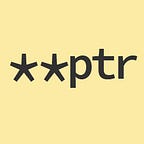Top 10 Best Practices for Writing C++ Code With Examples
Published in
3 min readAug 6, 2023
C++ remains a cornerstone in the programming world, offering a blend of performance and expressiveness. Yet, writing efficient, readable, and maintainable C++ code requires adherence to certain best practices. Below, we’ve listed the top 10 practices for writing C++ code, complete with examples.
Land a higher salary with Grokking Comp Negotiation in Tech.
1. Use the RAII (Resource Acquisition Is Initialization) Principle
RAII ensures that resources, like memory and file handles, are acquired on object creation and released on destruction.
class FileHandler {
private:
std::fstream file;
public:
FileHandler(const std::string &filename) : file(filename) {}
~FileHandler() {
if (file.is_open()) file.close();
}
};2. Favor the C++ Standard Library
Instead of reinventing the wheel, use data structures and algorithms provided by the Standard Library.
std::vector<int> vec = {1, 2, 3, 4, 5};
auto max_val = std::max_element(vec.begin(), vec.end());